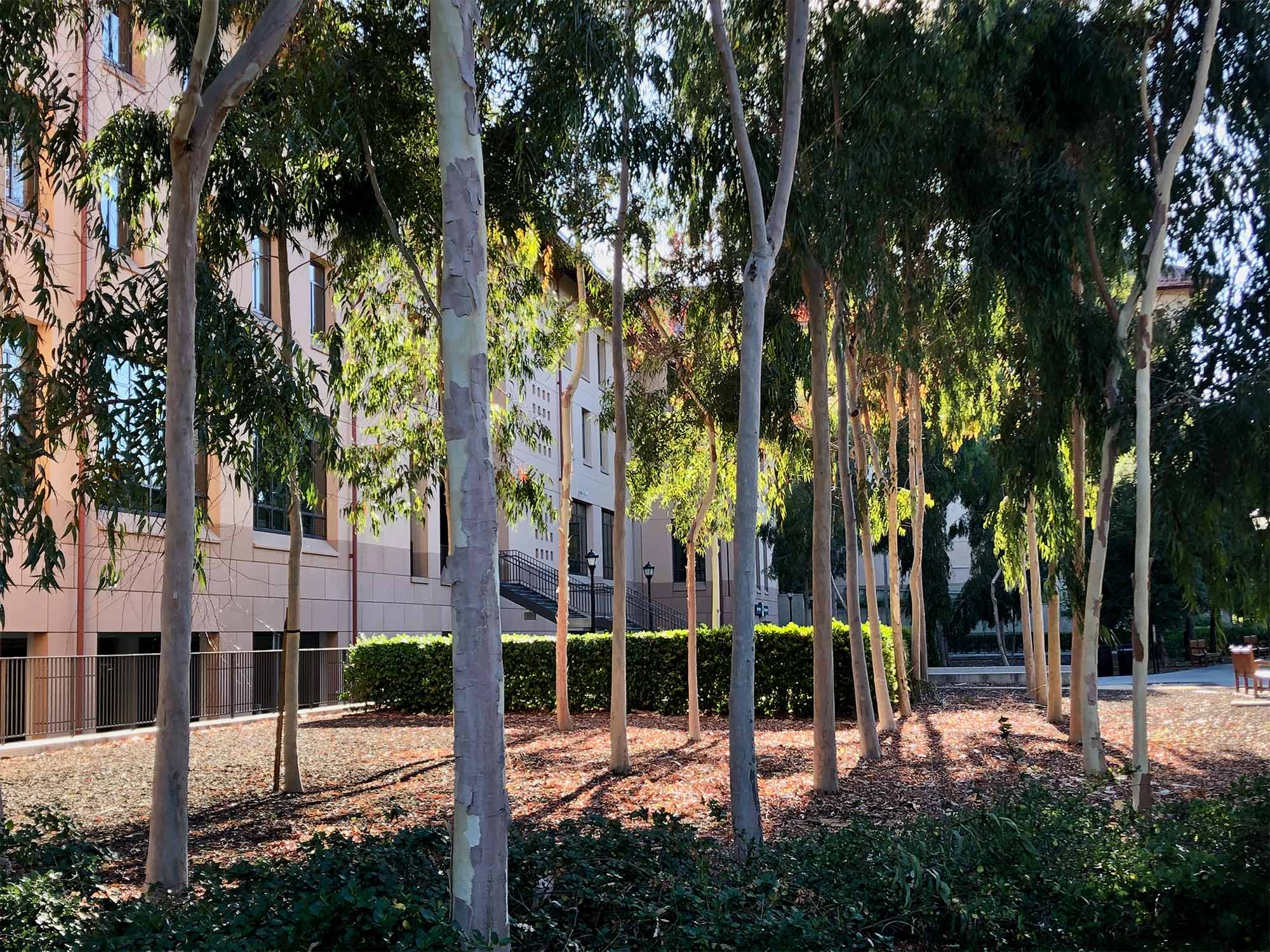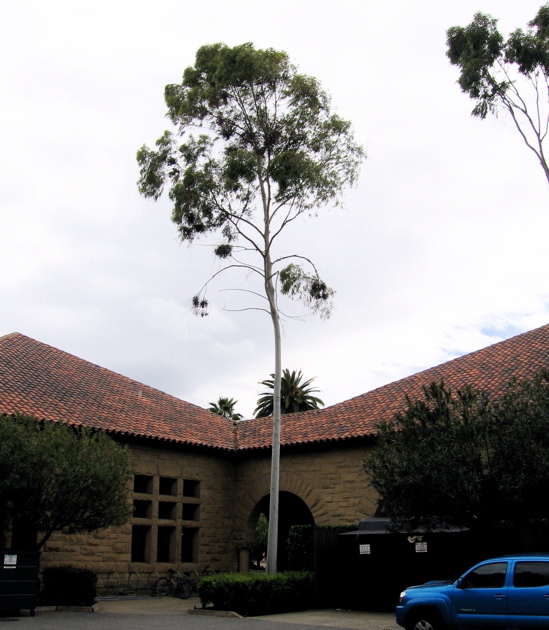Corymbia citriodora
 lemon-scented gum
lemon-scented gum
A strikingly handsome tree with a slender trunk and thin white bark, soaring more than half its total height to the lowest branches. The white flowers occur in panicles rather than cymes, but are generally too high to see (unlike the panicles of E. polyanthemos). Gum tree leaves vary a lot in smell when you crush and sniff them because the mix of oils varies from one species to the next, but with the lemon-scented gum the oil is virtually pure citronellal, known as a germicide and mosquito repellent, but with a marvelous aroma for humans.
Between the Durand and McCullough buildings there are three tall trees alongside two others sprouting from stumps. A handsome pair in the outer northwest Quad (removed 2015) showed how a tall trunk with no branches at all up to a substantial height can leave a detectable record of bygone branches in the form of dimples and pimples on the otherwise smooth trunk. As a branch becomes shaded from sunlight as a result of growth in height, abscissic acid (a plant hormone) causes a brittle zone to form at the trunk. Wind then breaks the branch off cleanly. Higher up on these two trees were branchlets that were killed by freezing; no living tissue remained to respond to the hormone. Consequently, those sticks remained visible for years. Research on abscissic acid has received military support aimed at defoliating forests.
In colder sites on campus, trees well over 30 feet have succumbed to our occasional freezes. However, in the 2010s, mass plantings of lemon-scented gums took off, with three dozen in closely-spaced plantations on the Campus Drive side of the northeast buildings of Knight Management Center (2011), almost 30 surrounding the Miller and Lieberman Houses in the Kennedy Graduate Residences (2014), and a couple of dozen in a row along Fremont Road at the Central Energy Facility. Also see a pair off Buckeye Lane at the Schwab Residential Center.
A specimen with the largest girth of any seen locally snuggles up to the right end of 410 Sheridan Avenue in Palo Alto. It was planted in 1977, when the building was constructed. Run your hand over the rippled musculature of the trunk. Find three nearby, next to the creek in the parking lot at 340 Portage Ave; hopefully they survive upcoming development in that area.
Occasional juvenile leaves can be found near ground level that have a visibly rough undersurface made up of tiny projections containing lemon oil. After you feel the sandpaper-like texture, smell your fingers! Onlookers are astonished by the fragrance; you can put these leaves in your gin and tonic!
About this Entry: The main text of this entry is from the book Trees of Stanford and Environs, by Ronald Bracewell, published 2005. Sairus Patel noted removals, added 2010s campus plantings and Palo Alto locations; all locations up to date (Apr 2021).




